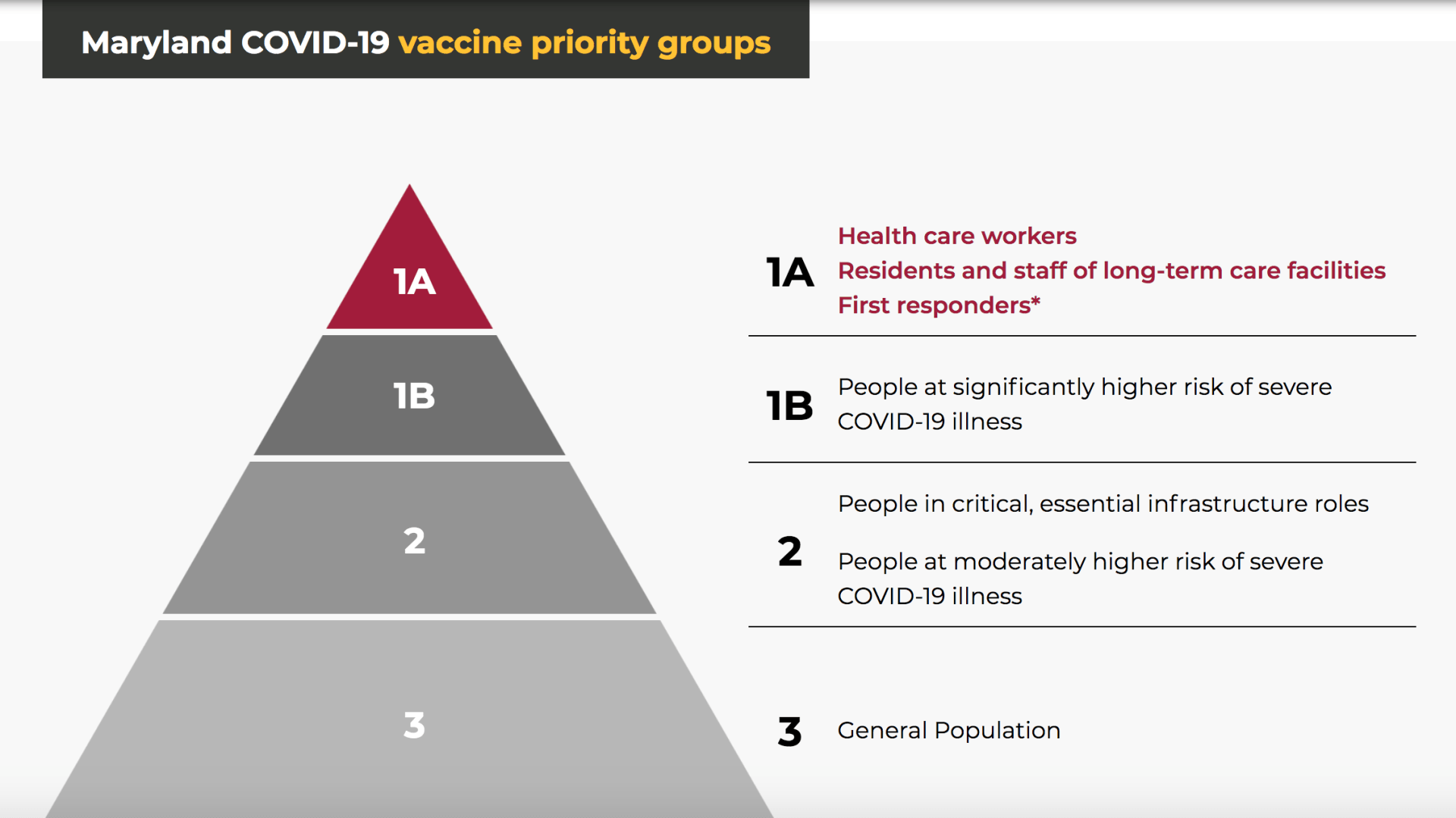Covid-19 Vaccinations Begin in Maryland
The roll-out of covid-19 vaccine in Maryland has begun! It was an early Christmas gift — with almost a thousand doses of the Pfizer vaccine arriving on Monday, December 15, at the University of Maryland Medical Center (UMMC) in downtown Baltimore. After unpacking and properly storing the vaccine, five of UMMC’s frontline health care providers — two physicians, a nurse, a respiratory therapist, and an environmental service worker — received an inoculation that very day. And every day since, more staff and patients in hospitals and nursing homes across Maryland have been vaccinated. This marks what we all hope is the beginning of the end of the pandemic.
The vaccine is allocated by the federal government to the states and is provided free of charge to the states, although the healthcare facility — hospital, pharmacy, or doctor’s office — that actually gives the shots usually charges a fee. Insurance, Medicare, or Medicaid generally covers this administrative fee. Through the end of December, Maryland had been allocated 273,875 doses. This allotment consists of 140,300 doses of the Moderna vaccine and 133,575 doses of the Pfizer version. Both brands require two shots, three to four weeks apart, for maximum immunity.
As of January 2, 2021, almost 60,000 Marylanders have been vaccinated against covid-19. This includes 6,622 on the Eastern Shore. Almost all were healthcare providers and first responders. During the first two weeks of January, the state — with the help of Walgreen’s and CVS — plans to get vaccines to all 227 nursing homes in Maryland.
Phase 2 will start after Phase 1 and will go to essential infrastructure workers as well as to people at moderately higher risk of severe illness from covid-19. This includes categories such as grocery store clerks and transportation workers. This moderately high-risk category also includes older people as well as people with underlying health conditions such as heart or lung disease, or diabetes.
Phase 3 is for the general public. It will start after all people in Phase 1 and 2 have received vaccinations. How soon that will happen depends on how fast the various vaccines can be manufactured and distributed and whether or not vaccine formulas need to be modified significantly to be effective against the new strains of covid-19.
Currently, inoculations are only available for those ages 18 and up for the Moderna vaccine and 16 and up for the Pfizer. Testing is underway on younger children.
Although vaccination is not required by law at this time, employers may require that their employees get vaccinated as a condition of employment. Everyone will receive a vaccination card to show they have been vaccinated and to give the scheduled date for their second shot.
It will still be necessary to wear masks and to socially distance during all three phases of the vaccination program because it is possible for someone who has received the vaccine to contract and possibly spread covid-19. Vaccinated persons will most likely be asymptomatic if they do catch covid-19 because the vaccine nips the infection in the bud. But we don’t know yet if such people will be infectious, but they may well be. Thus, until herd immunity is achieved, we need to keep up all the precautions — masks, hand-washing, social distancing, etc. At the earliest, herd immunity could develop by late summer or early fall 2021. Hang in there. The end is in sight.
The information below on the number of vaccinations in Maryland as of January 2 is from the Maryland Department of Health.
Vaccination Phase: Phase 1A
Number of Vaccinations: 59,769 (+3,617 in last 24 hours)
Percent of Population Vaccinated: 0.988623%
The chart below gives Maryland covid-19 case data as of Saturday, January 2, 2021.
Source: New York Times Covid-19 Interactive Data Base
Jane Jewell is a writer, editor, photographer, and teacher. She has worked in news, publishing, and as the director of a national writer's group. She lives in Chestertown with her husband Peter Heck, a ginger cat named Riley, and a lot of books.
Common Sense for the Eastern Shore













